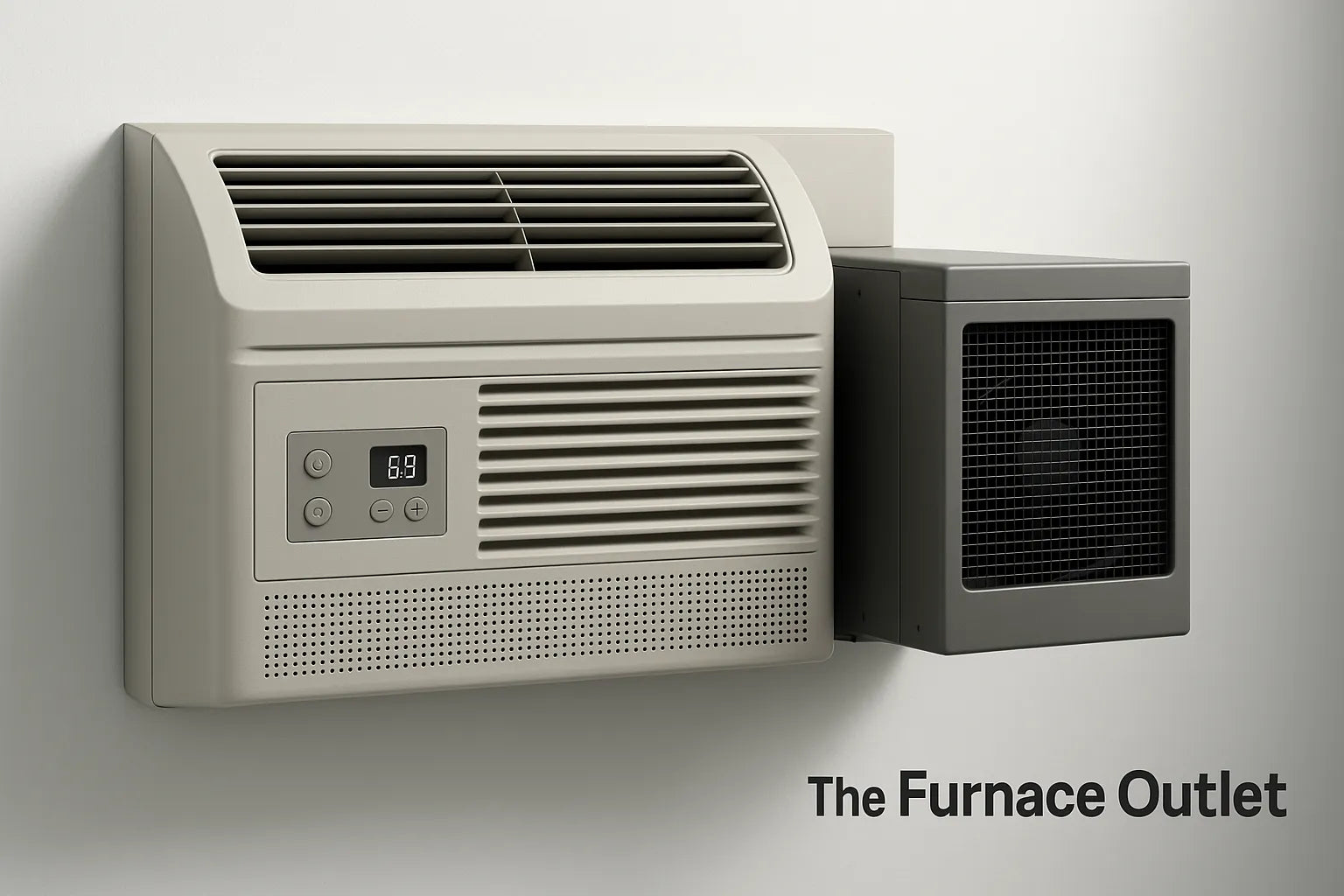Key Takeaways
-
PTACs heat/cool one room through a wall, no ducts
-
13 top brands focus on efficiency, noise, or budget
-
Amana leads with a 5-year parts & labor warranty
-
Match voltage, BTUs, and controls to avoid rewiring
Why PTAC Units Matter More in 2025
Rising electricity prices and stricter building codes mean every kilowatt counts. A PTAC delivers heating and cooling from one neat box, so hotels, apartments, and senior living facilities can give each guest or tenant personal thermostat control. New Energy Star rules now reward models with higher EER and quieter fans, pushing manufacturers to innovate. This guide breaks down who makes PTACs, what each brand does best, and how to choose the right unit for U.S. homes and small businesses.
Save energy with this Hotpoint PTAC
Understanding PTAC Basics
A PTAC’s indoor coil absorbs heat, its outdoor coil rejects heat, and a reversible valve lets the same machine heat in winter. Because the compressor and fans live inside the wall sleeve, sound control and airflow design vary by brand. Units run on 208/230 V or 265 V, draw 15–30 A, and produce 7,000–17,000 BTU. Selecting the correct voltage and amperage prevents tripped breakers, while matching BTU output to room size avoids hot‑and‑cold swings.
For first‑time owners, our “What Is a PTAC Unit?” post walks through each part in pictures.
The Big Question: Which Brand Is Best?
No single brand wins every category. Think of PTACs like sneakers: one pair might be ultra‑light, another water‑proof, another budget‑friendly. Below, we group manufacturers by their standout strengths—noise, energy control, tech features, or price. Bookmark our full “PTAC Energy Efficiency Ratings Explained” guide for a deeper dive into EER and CEER numbers before you buy.
Amana: DigiSmart™ Energy Leader
Amana’s DigiSmart™ thermostat network lets hotels cut energy use up to 35 % by linking every room to one dashboard. The system auto-detects vacancies and trims compressor runtime. Units come with the industry‑leading 5‑year parts‑and‑labor warranty for peace of mind. Thanks to dual‑fan motors, newer models whisper at ~47 dB—roughly a library—and meet California Title 24 airflow rules.
Friedrich & Mitsubishi Electric: Masters of Quiet
Independent lab tests rank the Friedrich ZoneAire® Premier as the quietest PTAC available, edging out GE Zoneline and Amana in decibel sweeps. Sound‑dampening foam, a tangential blower, and vibration pads protect light sleepers. Mitsubishi Electric, famous for mini‑splits, brings the same whisper technology to its PTAC line—many models run under 40 dB, softer than rainfall. If your building enforces “quiet hours,” these brands keep you in code.
Upgrade to Amana 14,700 BTU
GE Zoneline & LG: Hotel‑Proven Favorites
Since 1961 GE Zoneline has been the go‑to for U.S. motels. The latest chassis removes 30 % of previous parts, slashing failure points and easing maintenance.LG answers with Energy Star PTACs that include dry‑mode dehumidification and programmable 7‑day schedules. Both brands integrate easily with 42‑inch standard wall sleeves, so retrofit jobs rarely need masonry changes. For application ideas, see “ Can a PTAC Heat and Cool an Entire Apartment?”.
Daikin, Fujitsu, Carrier & Gree: High‑Tech Choices
These four push tech boundaries. Daikin’s inverter compressors modulate speed to shave peaks off your utility bill. Fujitsu layers smart humidity sensors to keep the relative humidity around 45 %. Carrier offers touch‑friendly control panels and easy front‑filter access for quick cleaning. Gree’s Wi‑Fi models pair with the free GREE+ app, turning a phone into a room controller—handy for Airbnb hosts who need remote lockout or setback.
View GE 12,000 BTU PTAC
Goodman, Hotpoint & Islandaire: Budget‑Friendly Workhorses
If upfront cost drives the decision, these names deliver solid performance at lower price points. Goodman leverages shared components with its central‑air line, keeping parts cheap and easy to source. Hotpoint’s R‑32 refrigerant models cut global‑warming potential by 30 % compared with older R‑410A units, a perk when marketing eco‑conscious rentals. Islandaire specializes in exact‑fit “sleeve‑ready” replacements, so property managers can swap 30‑year‑old units without drywall repair. Before ordering,
Grab this budget Hotpoint model
How to Pick the Right PTAC for Your Room
-
Measure the wall sleeve—most are 42″ × 16″, but older hotels vary.
-
Match voltage and amperage on the breaker panel.
-
Size BTU output: 9,000 BTU cools ~350 ft²; 15,000 BTU covers ~700 ft².
-
Check local codes for sleeve insulation, condensate management, and the type of refrigerant.
-
Compare total cost (unit + install + energy use). Our master “HVAC Tips” hub lists updated rebate charts and sizing worksheets.
See the top-rated GE PTAC now
Frequently Asked Questions
What does “PTAC” stand for?
Packaged Terminal Air Conditioner—one box that heats and cools a single room.
Can I install a PTAC myself?
Often, yes, if replacing an existing unit of the same size and voltage, but new wall cuts need a pro.
Do PTACs need ductwork?
No. They sit in the wall sleeve and push air directly into the room.
How often should I clean the filter?
Every 30 days for hotels; every 60 days for homes.
Which refrigerant is best in 2025?
R-32 or R-454B meet new low-GWP rules in most U.S. states.







